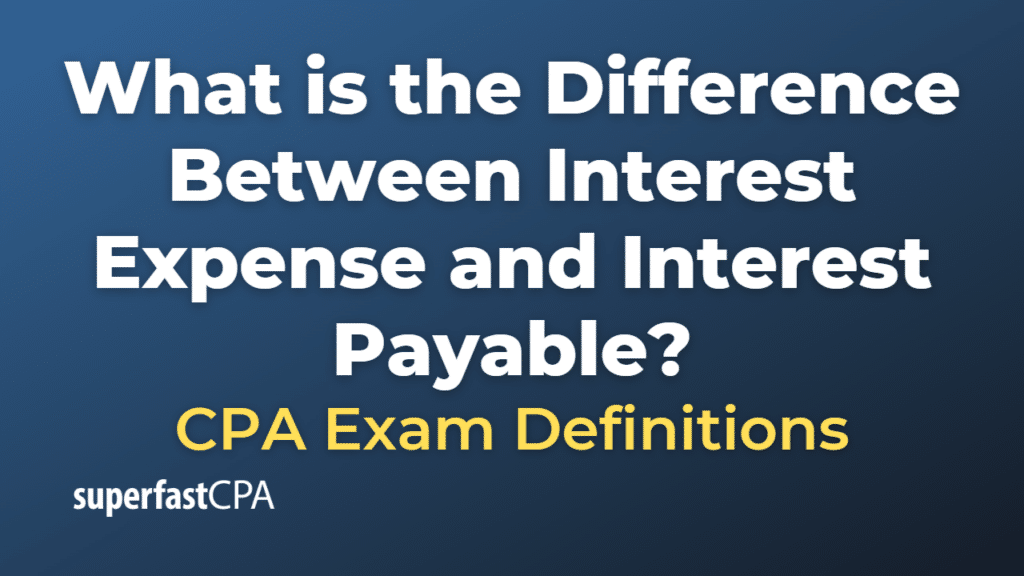Difference Between Interest Expense and Interest Payable
Interest expense and interest payable both pertain to the costs of borrowing money, but they represent different aspects of that cost and are accounted for in different ways:
- Interest Expense: This is the cost of borrowed funds over a specific period. When a company borrows money, it incurs a cost for the use of that money, which is interest. Interest expense is recognized on the income statement during the period in which the interest is incurred.
- Interest Payable: This is a liability representing the amount of interest that has been accrued but has not yet been paid. Interest payable is a current liability and appears on the balance sheet. It increases with the accrual of interest that is yet to be paid and decreases when the company makes interest payments.
So the key difference is: Interest Expense relates to the cost of borrowing and is recognized on the income statement, affecting a company’s net income and retained earnings. On the other hand, Interest Payable is a liability that represents interest due to lenders and is recorded on the balance sheet, affecting a company’s overall financial position.
Example of the Difference Between Interest Expense and Interest Payable
Let’s consider a fictional business “PrintPal Corp.” that has taken a loan to buy a new printing machine.
The details are as follows:
- Loan Amount: $100,000
- Annual Interest Rate: 6%
Let’s consider the company’s accounting period as one month.
Interest Expense Calculation:
Interest expense is calculated based on the interest rate and the outstanding loan amount.
For a month, the interest expense would be: ($100,000 * 6%)/12 = $500
So, the interest expense that PrintPal Corp. would report on its income statement for the month is $500. This represents the cost of borrowing funds during that period.
Interest Payable Calculation:
Let’s assume PrintPal Corp. could only pay $300 of its interest expense for this month. The remaining $200 ($500 – $300) would be considered as Interest Payable. This amount would be carried over to the next month and is recorded as a liability on the balance sheet.
So in this example, the Interest Expense for PrintPal Corp. for the month is $500, which shows the cost incurred due to the loan. However, since they only paid $300, there’s an Interest Payable of $200, which is the amount still owed and will need to be paid in the future.













